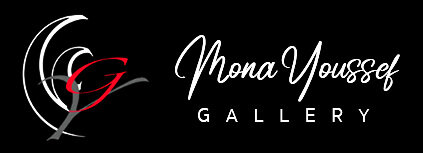Art, Artists and Psychology.
A study discussing questions; Why artists need to create art? Is art a product of the signals we receive or interpret? Psychologists have endeavored to observe and study the brain of artists.
While the majority agrees that art is about the expressions of beauty, others see it as merely self-expressions of the surroundings regardless of seeing beauty or the absence of it! Many believe that art is closely connected with culture; where there is culture there is art! How can we explain a child who passionately draws and paints? What could a child know about culture in a very early age!?
Number of psychologists tried to observe and study the brain of artists. Apparently, the subject has been of serious concern and got their attention. Rudolf Arnheim, believes that the only access to reality we have is through our senses. He also argues that perception is strongly identified with thinking, and that artistic expression is another way of reasoning. In “The Power of the Center”, a study of Composition in the Visual Arts (1982), Arnheim addressed the interaction of art and architecture on concentric and grid spatial patterns. He believes that form and content are inseparable, and that the patterns created by artists reveal the nature of human experience.
Wolfgang Metzger's main argument, drawn from Gestalt theory, is that the objects we perceive in visual experience are not the objects themselves but perceptual effigies of those objects constructed by our brain according to natural rules. Gestalt concepts are currently being increasingly integrated into mainstream neuroscience by researchers proposing network processing beyond the classical receptive field. Interpret
Edward W.L. Smith, Ph.D. wrote a book with the title” The Psychology of Artists and the Arts”. This book offers the first comprehensive examination of the psychodynamic theories of artistic creativity and the arts. Neither oversimplifying the complexity of these theories, nor bogging down in pedantic discourse, it honors the depth and richness of the work of Freud, Adler, Kris, Reich, Jung, and several lesser-known theorists, while making their theories readily accessible to the educated reader. After discussing the role of theory, the work offers each concept as a readily usable template for describing and understanding a work of art, whether painting, sculpture, music, dance, film, poetry, or prose. With these theories at hand, anyone interested in the arts will possess a far richer vocabulary for describing the artistic experience and a deeper understanding of the artist's creativity.
Many of today's researchers may find themselves pondering the intriguing question of what effect Metzger's theories might have had on vision research of “Laws of Seeing” and “Laws of perception”. There are numbers of branches within psychology that are strictly devoted to understanding the human mind and behavior through rigorous scientific experimentation.
Since psychologists are/were not necessarily artists, can they understand artists? Is psychology an art? The brief answer is “yes.” Can an artist become a psychologist or a psychologists become an artist? Interestingly, to know that a student with a Bachelor of Arts can gain entry to a Masters or PhD/PsyD in Clinical or Counselling Psychology if they have enough Psychology credits. After completing PhD/PsyD, one could then complete license exams and supervised hours to become a Licensed or Chartered Psychologist.
Whether psychologists agree or disagree on the questions; Why one become an artist, do artists need to paint or what is the psychology of an artist, in many cases, each of us can asks himself/herself to learn even more.
In my humble opening, there are two causes/sources behind each artist! Nature and personal experience! No denial that nature is the mother of inspiration to all who are drawn into it and meditate. Young and old have same capacity of observing nature and naturally get affected by it. Regardless of ages, our means of expressions are products of the surroundings, atmospheres, personal circumstances, upbringings, motives and our heritage makeup! Accordingly, we express ourselves in various ways whether paintings, composing music, writing, designing, planning, managing, calculating, discovering, structuring or leading etc.
As long as the motive is fed well, passion will follow and flow and artwork is shaped to reveal itself. When nature and emotion are combined, create unique pieces of art/work. Colours were created for our visual stimulus with the inner emotional state and artists are the most recipients of this.
This profound attraction is transformed into a desire and sends signals to the brain creating new impulses in the observer mainly artists. How we react to those signals? Each of us is different and gladly it is so, for we need diversity in our world to complete each other and enjoy living.
©Mona Youssef
